Rendering Tallow from Sheep Fat for Sustainable Cooking Fat, Candles, Soap Leather Conditioning and More!
I am really appreciating having multiple diverse sources of fat in my diet. The great thing about having rendered fat for cooking is that it is local and sustainable. It means there is less cooking oil that I have to purchase from the store, which means less need for industrial monocultures and a lower carbon footprint. Rendering my own fat helps me have more connection with the food that is on my plate. Since cooking oil and fat are staples in my diet and my kitchen, it is really exciting to me that I am learning how to source local fat and render it into a shelf stable format for cooking!
This is my second experience in rendering fat and it turned out quite well!
Last time I posted about rendering lard from pig fat. Today I want to share with you how I rendered tallow from sheep fat.
In this case I had about a gallon and a half of sheep fat in my freezer. I helped my friends by skinning and eviscerating several sheep before they sent it off to the butcher for USDA processing for their customers.
Most of the sheep I worked with were lambs, but one older yearling was larger and had quite a bit of fat. I left all of the fat that was lining the carcass and back attached to the meat. However, there was quite a bit of fat around the stomach and intestines that I was able to separate out and glean for myself. It came out to a gallon and a half or 8.4 pounds.
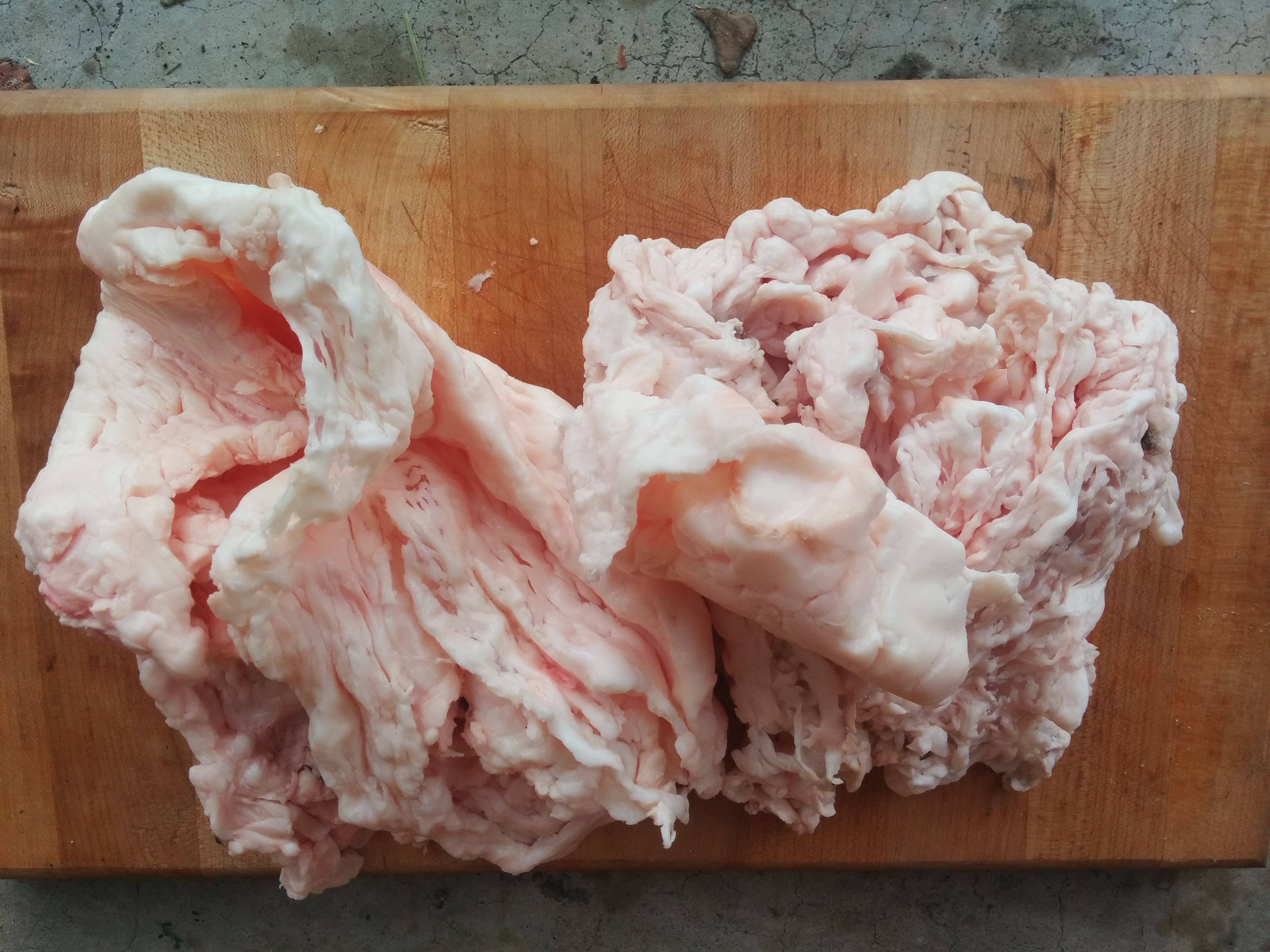
Here is some of the fat and I am starting to chop it into small chunks 1/4"-1/2" approximately.
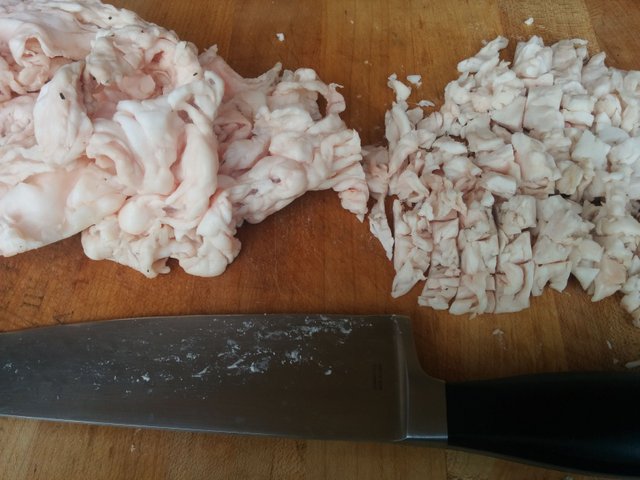
The intestinal fat is different than the fat on the back and sides of the animal. You can unfold it and it is almost a webbed fabric... how interesting!

I put all of the chopped fat into a pot.
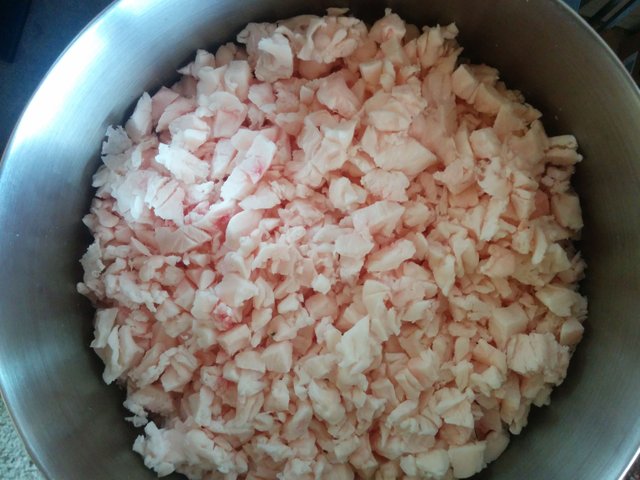
And the pot is set on the back of the wood stove on top of a trivet to keep it from scorching. Rendering fat is best done at a low temperature. If you aren't using a wood stove you can also render fat in a crock pot or in the oven on the lowest setting.
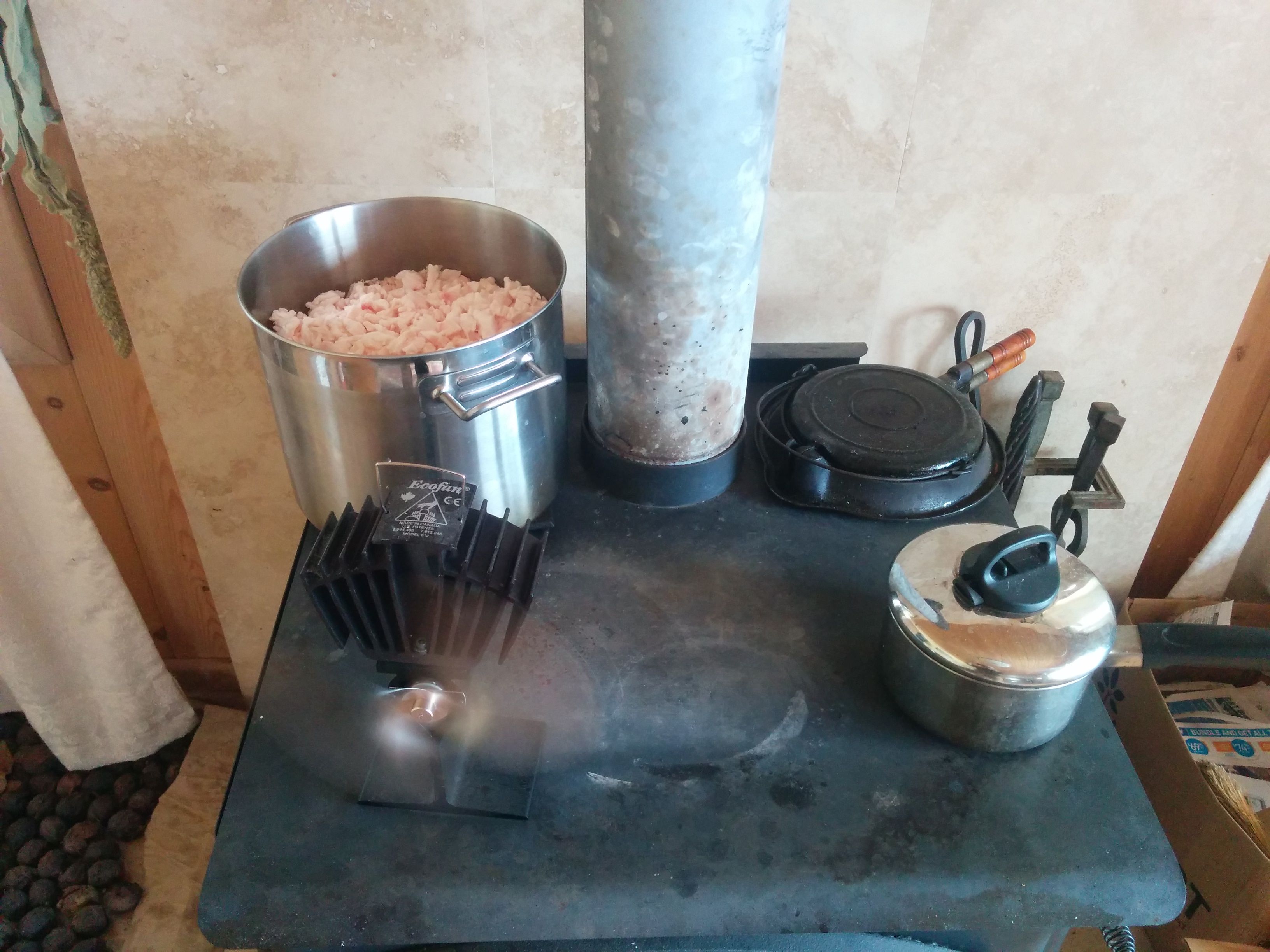
After a few hours the fat starts to melt off or render. I stir the fat every so often to get an even rendering.
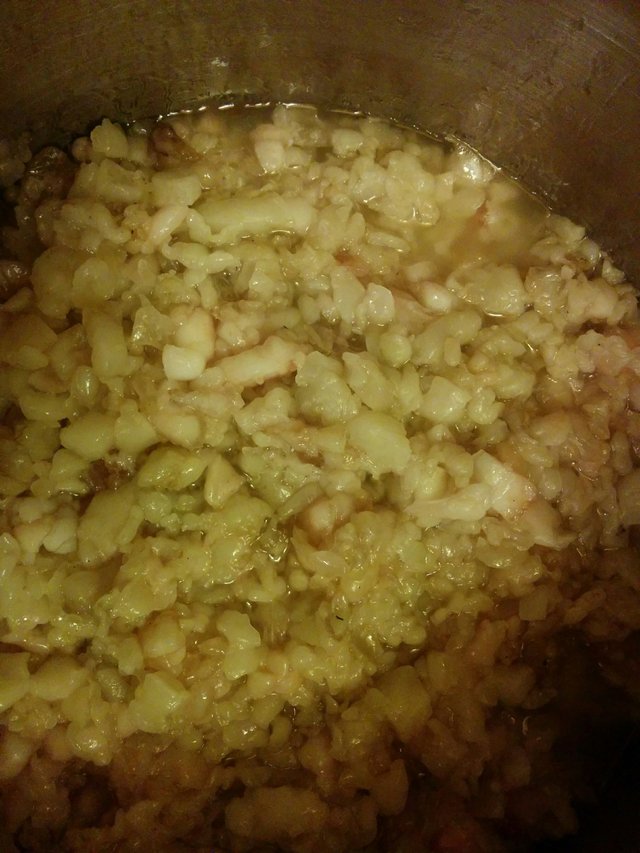
This is a slow process and we aren't burning the stove super hot since it isn't as cold as it was a few weeks ago. So the rendering process is taking several days. In the morning the stove is cool and the fat congeals. No problem, start up the stove again and rendering continues.
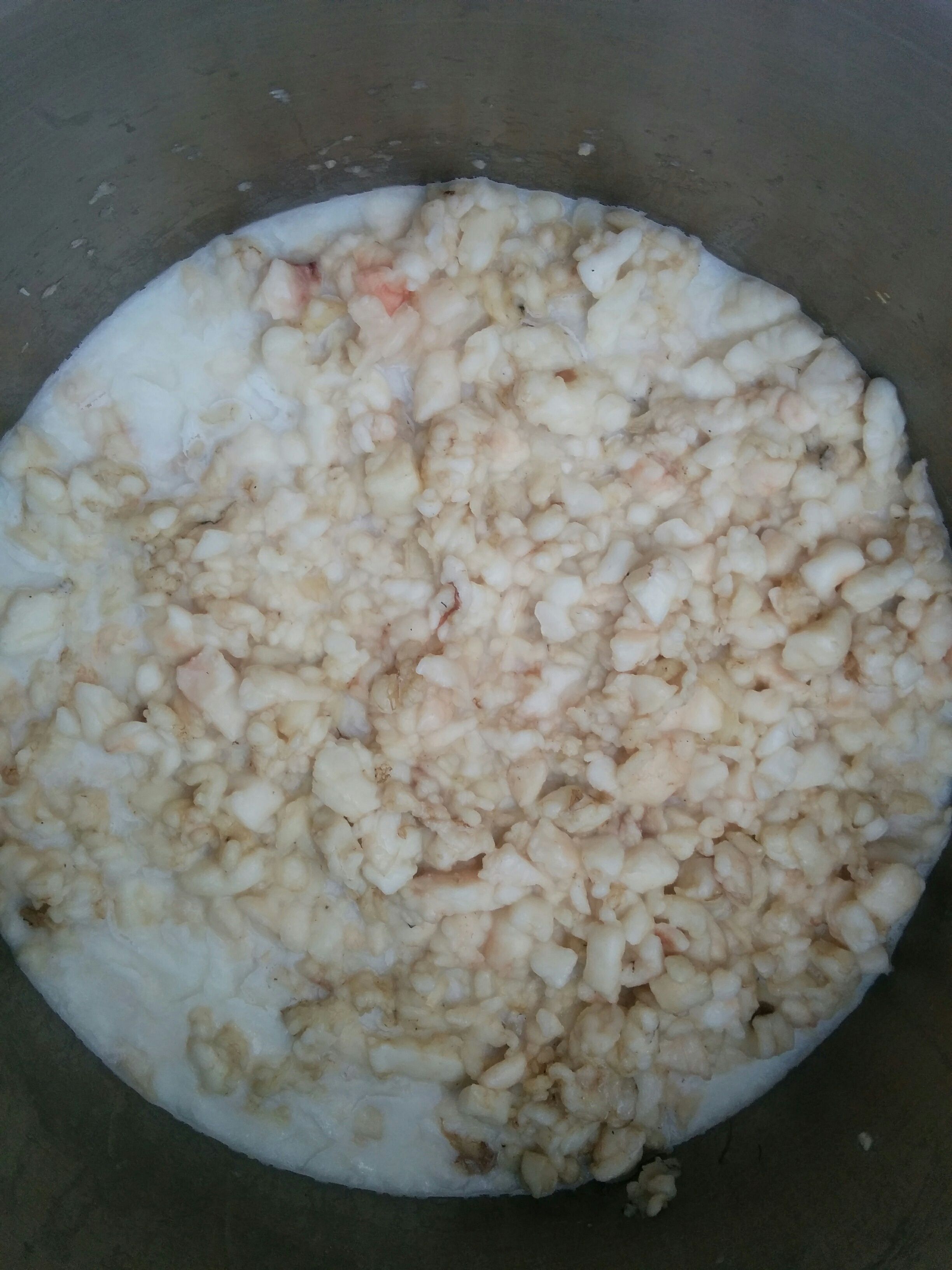
After some time the fat melts more.
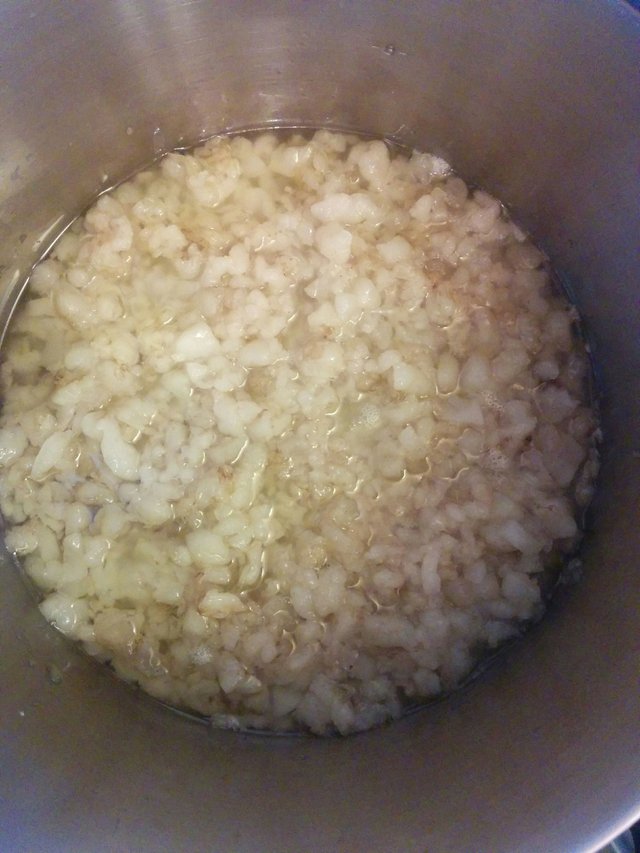
And finally it melts down to the point I am happy with. Some of the pieces of fat are starting to brown and I feel that I am at a place I am happy with the amount of tallow I have rendered. I could probably get some more tallow if I was more patient, but it has already been several days and this is quite a good amount.
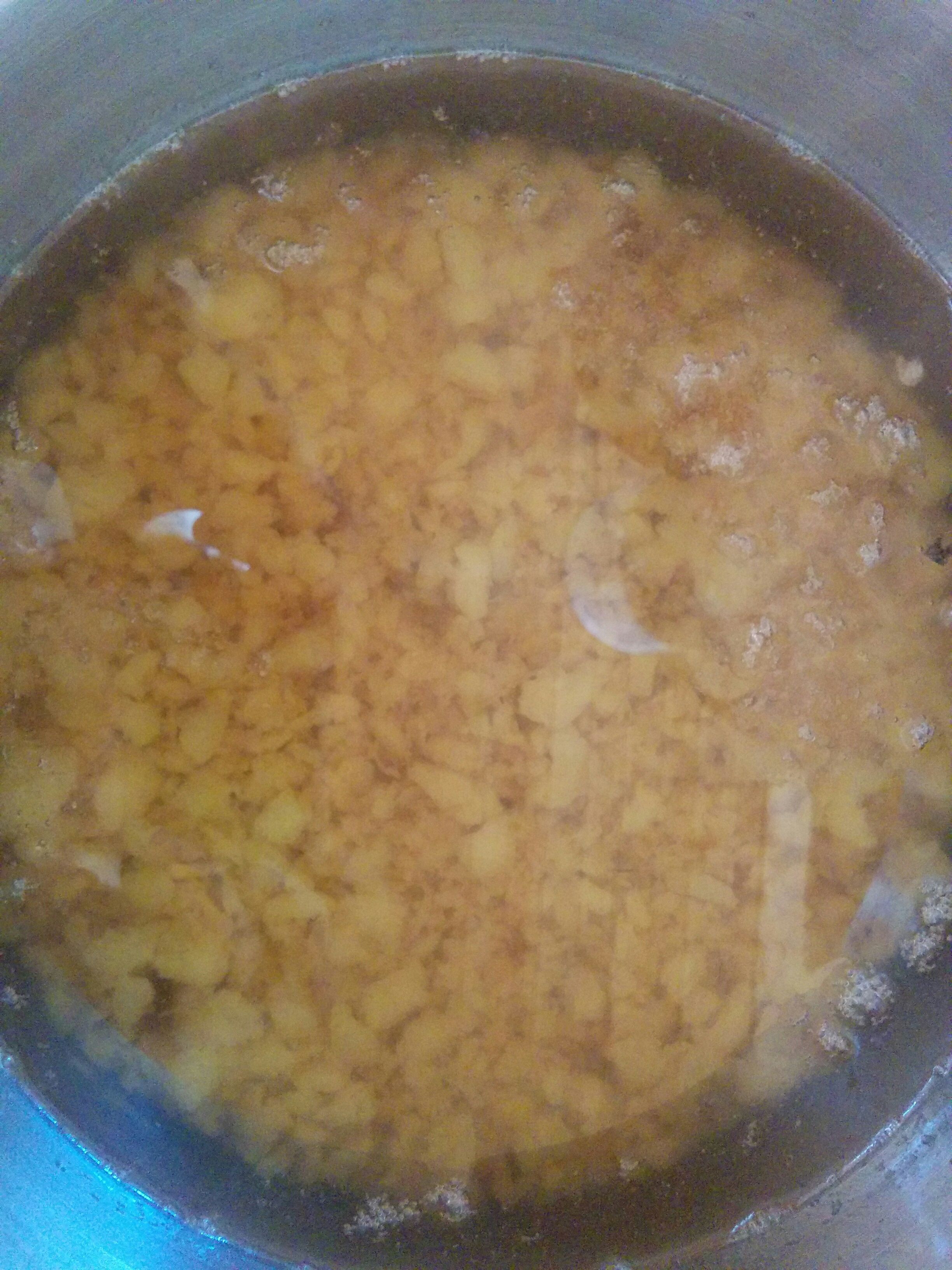
I strained the tallow out of the remaining fat over a container, using an old scrap of tshirt. Several layers of cheesecloth could do the trick too. I used this method in straining the pig lard and it worked well.
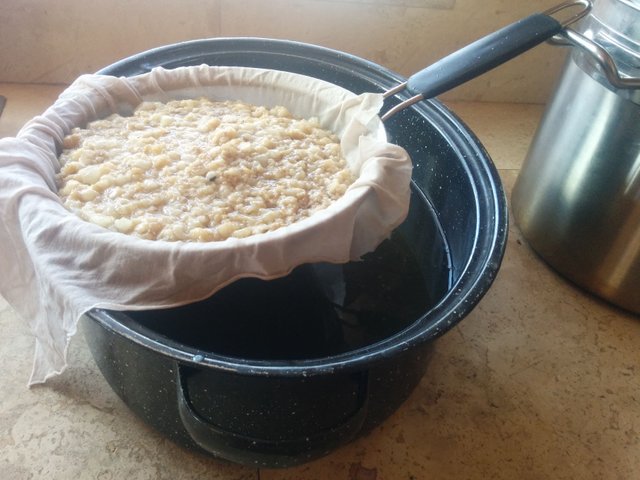
I ended up stirring it, shaking it and doing a bit of squeezing with the cloth to get some more out. The remaining fat was fed to the chickens with other scraps and they gobbled it up!!!
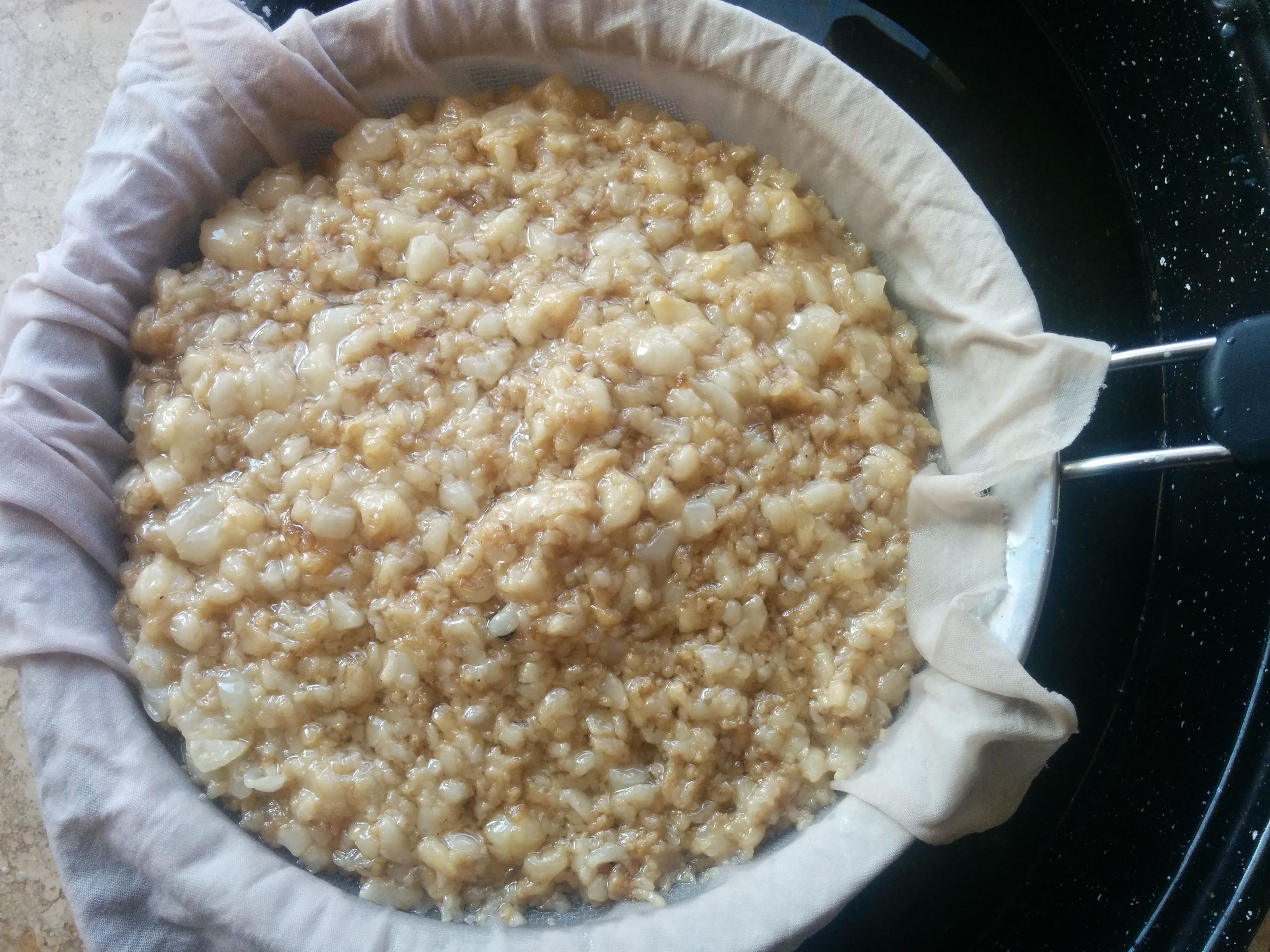
The tallow was poured off into mason jars and allowed to cool.
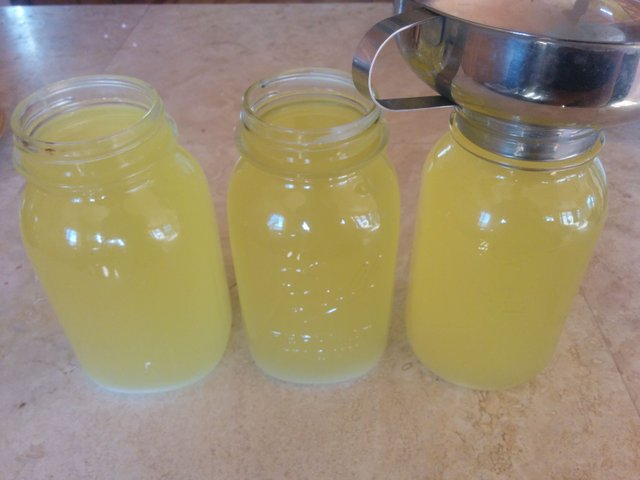
Out of 8.4 lbs of stomach/intestinal sheep fat I gained 3 quarts (pictured) plus another 3/4 cup or so (not pictured) of the final pour that had some sediment in it. Not bad!!
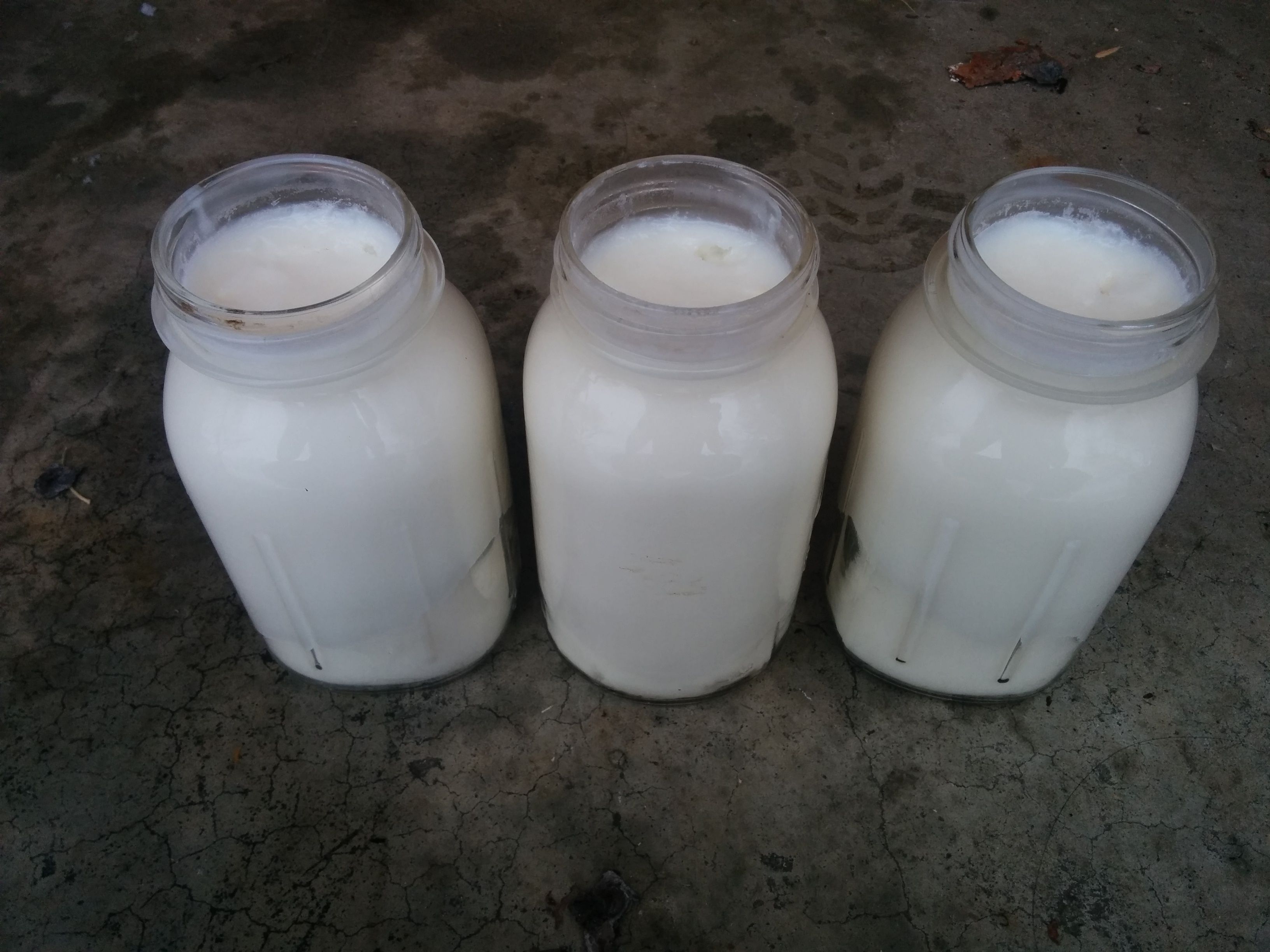
The resulting tallow in that last pour with some sediment smelled a bit like sheep fat, so I think I'll use it to add a layer of waterproofing to my leather insulated winter gloves. The main 3 quarts of tallow don't smell like sheep at all. I gave one away as a gift to family and the other two I will save for cooking/frying my food.
Interesting Observations
- The sheep tallow cooled and solidified WAY faster than the pig lard
- While I was cleaning up I noticed that the sheep tallow was much more resistant to soap and hot water and was harder to wash off my kitchen wares and my hands
- Because my hands were so well moisturized and supple even after washing them with soap, I am thinking that sheep tallow would be excellent as either a base or an additive in my herbal salves. I'll be testing this theory out in my upcoming salve making.
- I have done some cooking with the tallow and have not noticed any major flavor profile. I believe that it is much more subtle in flavor to pig lard. But I will be doing more cooking with tallow soon to confirm that.
I just found across this article on tallow uses which says that you can use sheep tallow for:
- Cooking
- Baking
- Leather Conditioner
- Gun Cleaning
- Skin Care [ @camomilla ]
- Soap Making
- Lubrication
- Candle Making [ @lebron2016 ] and Where Did Candles Come From [ @tamurah ]
- Fuel
- Motor Oil
- Treating Blisters & Skin Conditions
- Flux for Soldering
WOW!!! Incredible! I might have some more projects with tallow coming up than I originally realized.. Candles? Soap? Salves? Hmm... which one first :)
Wow! This post definetly earns the #healthy-home seal of approval! Very good!!
I love the observations you've made about solidifying and hand moisture! Great Photos and all!!
Excellent!!
@healthy-home is a curation account of @em3. If you are reading this article and appreciated it as much as I did, please consider supporting @healthy-home so that we can find and BOOST more excellent authors and articles dealing with strong families / gardening and food harvest / and homesteading!!!
Peace
Thank you @healthy-home!! Yeah the skin care aspect was a fun discovery/bonus :)
Would you pour some of the fat off part way through as it melts or is it best to wait until it's all done?
I don't see any reason why you couldn't use or pour some off half way through. I just waited until it was all done, but you wouldn't have to! I probably wouldn't pour it all off though, so there is at least some melted lard in there so that the fat isn't scorching on the bottom of the pan. But if you have it on low heat it shouldn't scorch.
I'm a member of the WAPF, they have a lot of awesome topics on FB and rendering beef tallow was one. As a base for lotions and beauty products it has wonderful anti-aging and moisturizing properties. Sheep tallow would be just as good If not better I assume, awesome post!
Thanks for that info @bthebest7! I have zero experience with beef tallow. I would also assume they are synonymous in many respects. JC what does WAPF stand for? I am not on FB anymore, but I am curious what this group is.
Weston A Price Foundation. His book "nutrition and physical degeneration" is from the 40's or 50's I believe. He was a dentist that travelled the world studying different cultures on traditional diets vs modern diets. He documented the health effects of all the tribes he studied, eating healthy doses of animal fats, it's fascinating. Sally Fallon wrote "nourishing traditions" with Mary Enig. It's based on Dr Price's findings, she also is the president of WAPF they have a yearly convention in the states that thousands of people flock to!
Oh yeah! I am familiar with some of his work and the foundation and their podcast. I was spacing on the acronym :) I definitely appreciate his work and the info they put out.
Nice post
Hey @sagescrub. I wated to buy lard last time at the butcher after seeing your other post. Sadly he could not provide any. Where do you get yours from? Do I understand right, that it comes from your sheep?
The best way is to help a person that is butchering animals, and to get some of the fat in exchange or thanks for your assistance. Why pay when you can get for free. ...obviously this will mean networking, getting to know healthy farmers nearby and doing some volunteer work. Good luck!
This is a great way to see this @em3. I should keep my eyes and ears open. I was wondering, if @sagescrub is butchering his sheep.
The lard or tallow (depending on the animal) is the rendered fat. So you would want to ask the butcher for fat, not the lard. I would be surprised if they don't have any extra fat but if not, try another butcher or call some local ranches/farms that sell meat and I bet you can get some good deals. When you compare the cost of fat / lb to lard / lb it's a great deal to render your own. I got mine from doing work trade, I was helping this homestead with skinning and eviscerating their animals, and so I was able to glean the intestinal fat, organ meat and other parts that no one else wanted and would have just been discarded. In the case of the pork, I traded some lamb meat for pork fat from my homesteader friend that raised some pigs -- two of their customers bought a whole half pig but their other customers bought individual pieces and didn't want fat so they had extra to trade.
Again super great report @sagescrub. Thank you so mich for sharing. I think I did actually ask for lard, not fat that I could render... I will try again.
Good luck finding that fat!!
What an awesome and informative post! I had looked into rendering tallow previously - but I have never tried it. After reading your post I definitely want to! I would love to be able to use it in soap making especially but with so many uses - I know I would find more things to try. :)
Thank you for putting this together - I'll have to check out more of your work.
Thank you for stopping by! It's definitely an exciting and easy way to use animal fat. I'm glad I could add some inspiration to your future rendering and tallow projects :)
That is interesting. I never actually seen how it is done, much less see a sheep in person, but thanks to your post for showing it. I am amazed at how many uses tallow can do.
You're very welcome :)
I have made pig and beef renderings but never sheep. Your experience has lead me to want to this too.
So now I have to try beef tallow at some point since you said that! I never rendered beef fat.
We learn something new every day here on steemit! Isn't awesome?
Fascinating post. Ive not gone that far yet, but it is good information to have.
:) I'm glad you enjoyed it!
Nice!
You know, it hadnt even occurred to me that you could make tallow from sheep fat. I am familiar with lard and tallow from cows, but the thought hadnt even crossed my mind...
Do you find it as good to cook with? I bet it would make awesome lotion...
So far I have enjoyed cooking with it, but I have not used it extensively. I like that it is mild in flavor/odor. I'll have to report back once I've had more chance to cook with it in different dishes.
Sounds great!
We are thinking about possibly raising a sheep or two for meat in the near future, and I am glad to hear we can use the fat like this! :D
You're so nice for commenting on this post. For that, I gave you a vote!
Thanks!
Cool! Yeah like I said the lambs don't have too much fat, but you can get a little. A yearling or older would likely have quite a bit more fat. Maybe two sheep would be better than one since they like company :)
That makes sense! We were thinking about butchering at about a year so hopefully it would have a decent amount by then, but if not, oh well, haha.
Don't worry, I know how herd animals are. I will not sell single goats for that reason. If we got one sheep, it would be with the goats, but we would probably get two. :)
Oh gotcha! I should have known you were already on top of it with your happy herd :) Good luck with the new sheep venture!
Haha thanks! 😁